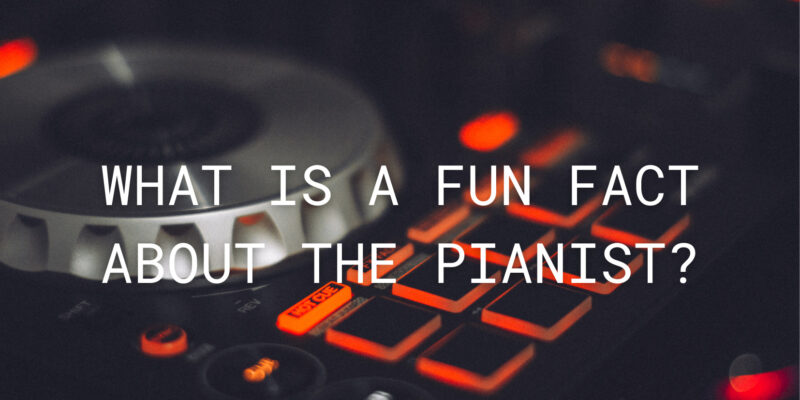Pianists are often celebrated for their extraordinary musical talents, but what many people might not realize is the impressive level of multitasking that goes into playing the piano. This unique aspect of pianists’ abilities is a fun fact that showcases their exceptional cognitive and physical skills.
The Multifaceted Skills of Pianists:
- Coordination of Both Hands: One of the most remarkable feats that pianists accomplish is the ability to coordinate both hands simultaneously. While playing the piano, each hand typically has a distinct role, with one hand handling melody and the other providing accompaniment or harmonies. This requires precise finger control and a high degree of hand-eye coordination.
- Independence of Fingers: Pianists develop finger independence to a remarkable degree. Each finger can be controlled individually, allowing them to play complex melodies and harmonies. This level of finger dexterity is essential for executing intricate pieces of music.
- Reading Sheet Music: Pianists read two staves of sheet music (the treble clef and the bass clef) simultaneously, which represents the music for both hands. This skill involves quick visual processing, as they must translate the notes and symbols into precise finger movements.
- Pedal Control: Pianists also use their feet to operate the piano pedals. The sustain pedal, for example, allows them to create a resonant and connected sound by holding down notes even after releasing the keys. Coordinating pedal use with hand movements adds another layer of complexity.
- Dynamic Expression: Pianists continuously adjust the dynamics (loudness and softness) of their playing to convey the emotional nuances of a piece. This requires a keen sense of musical expression and real-time decision-making.
Fun Fact: The Pianist’s Brain
Research has shown that pianists’ brains exhibit remarkable adaptability and efficiency. Learning to play the piano involves rewiring the brain’s neural pathways to handle the complex tasks of multitasking, finger independence, and memory recall.
Studies using neuroimaging techniques like functional magnetic resonance imaging (fMRI) have revealed that pianists have enlarged regions in their brain associated with finger control, spatial awareness, and memory compared to non-pianists. These findings highlight the brain’s ability to adapt and specialize in response to intense musical training.
In Conclusion: A Fun Fact to Celebrate Pianists
The incredible multitasking abilities of pianists, from their nimble finger work to their brain’s adaptability, make them a fascinating subject of study and admiration. Whether performing classical masterpieces or contemporary hits, pianists’ talents go beyond musical artistry, showcasing their exceptional cognitive and physical skills. So, the next time you enjoy a piano performance, take a moment to appreciate the pianist’s extraordinary ability to multitask and create beautiful music.


